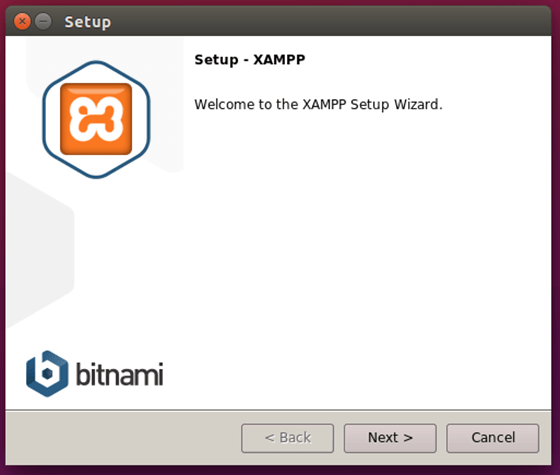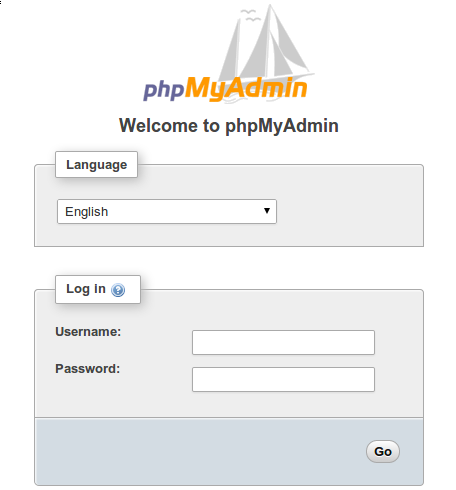How To Install XAMPP on Linux Mint 22

In this tutorial, we will show you how to install XAMPP on Linux Mint 22. For web developers, setting up a local development environment is crucial. XAMPP, a free and open-source cross-platform web server solution stack, makes this process straightforward. XAMPP includes Apache, MariaDB, PHP, and Perl. It provides a robust environment for testing and developing web applications locally before deploying them to a live server. This guide walks you through the installation of XAMPP on Linux Mint 22, offering detailed steps, troubleshooting tips, and additional resources.
Why Choose XAMPP?
XAMPP simplifies the setup of a local web server, saving time and effort. Instead of installing and configuring each component individually, XAMPP provides a ready-to-use package. This is especially beneficial for beginners and developers who need a quick and easy solution. It streamlines the development workflow and allows you to focus on coding rather than server configuration. Moreover, XAMPP’s cross-platform compatibility means you can use the same development environment across different operating systems. XAMPP is an excellent choice for anyone looking to develop web applications efficiently.
Prerequisites
Before installing XAMPP on Linux Mint 22, ensure your system meets the necessary requirements. This section outlines the hardware and software prerequisites, along with the user permissions needed for a smooth installation.
System Requirements
- Hardware Specifications: A modern processor (Intel or AMD) with at least 1GB of RAM is recommended. For optimal performance, consider using a multi-core processor with 2GB or more of RAM.
- Operating System: Linux Mint 22 (or a compatible version) should be installed and running correctly.
- Disk Space: At least 1.5 GB of free disk space is required for the installation. However, depending on the size of your projects, more space may be needed.
- Web Browser: A modern web browser like Mozilla Firefox or Google Chrome for accessing the XAMPP dashboard and phpMyAdmin.
User Permissions
You need a non-root user account with sudo privileges to install XAMPP. This allows you to perform administrative tasks without logging in as the root user, which is a security best practice. To verify your user has sudo privileges, run a command that requires administrative access, such as:
sudo apt updateIf you are prompted for your password and the command executes successfully, your user has the necessary privileges.
Stable Internet Connection
A stable internet connection is essential for downloading the XAMPP installer and any additional packages. Ensure your internet connection is reliable to avoid interruptions during the download process.
Updating Your System
Before installing any new software, it’s crucial to update your system packages. Updating ensures you have the latest security patches and software versions, which can prevent compatibility issues and improve system stability. Here’s how to update your system:
Step-by-Step Guide to Updating System Packages
- Open the Terminal: You can open the terminal by pressing
Ctrl+Alt+Tor searching for “Terminal” in the application menu. - Update Package List: Run the following command to update the package list:
sudo apt updateThis command retrieves the latest package information from the repositories.
- Upgrade Packages: After updating the package list, upgrade the installed packages with:
sudo apt upgradeThis command upgrades all outdated packages to their latest versions. You may be prompted to confirm the upgrade; type
yand press Enter to proceed.
Keeping your system updated ensures compatibility and security. Regular updates are a good practice for maintaining a stable development environment. This is especially important when installing software like XAMPP, which relies on various system libraries and components.
Downloading XAMPP
The next step is to download the XAMPP installer from the official website. This section provides detailed instructions on how to download the correct version for Linux Mint 22 using both a web browser and terminal commands.
Accessing the Official XAMPP Website
Open your web browser and navigate to the Apache Friends website. This is the official source for XAMPP installers. Make sure you are on the official site to avoid downloading potentially malicious software from unofficial sources.
Selecting the Correct Version for Linux Mint 22
On the XAMPP website, you will see options for different operating systems: Windows, Linux, and macOS. Choose the Linux version. Ensure you select the version that is compatible with your system architecture (usually 64-bit). The website typically provides the latest version, which should work well with Linux Mint 22.
Downloading XAMPP Using Terminal Commands
Alternatively, you can download XAMPP using terminal commands. This method is often preferred by developers for its speed and efficiency. Here’s how to do it:
- Open the Terminal: Press
Ctrl+Alt+Tto open the terminal. - Navigate to the Download Directory: Change your current directory to the Downloads directory:
cd ~/DownloadsThis is where the downloaded file will be saved.
- Download XAMPP: Use the
wgetcommand to download the XAMPP installer. Replace[download link]with the actual download link from the Apache Friends website:wget [download link]For example:
wget https://www.apachefriends.org/xampp-files/8.2.4/xampp-linux-x64-8.2.4-0-installer.run
Verifying the Download Integrity (Optional)
To ensure the downloaded file is complete and not corrupted, you can verify its integrity using checksums. The Apache Friends website usually provides checksums (MD5, SHA-1, SHA-256) for each file. Here’s how to verify the download integrity using the sha256sum command:
- Calculate the SHA-256 Checksum: In the terminal, run the following command, replacing
xampp-linux-x64-installer.runwith the actual filename:sha256sum xampp-linux-x64-installer.runThis command will generate a SHA-256 checksum for the downloaded file.
- Compare Checksums: Compare the generated checksum with the one provided on the Apache Friends website. If they match, the file is intact. If they don’t match, re-download the file.
Preparing for Installation
Before running the XAMPP installer, you need to prepare the downloaded file by changing its permissions to make it executable. This section explains how to do this using terminal commands.
Navigating to the Download Directory
If you haven’t already, navigate to the directory where you downloaded the XAMPP installer. Open the terminal and use the cd command:
cd ~/DownloadsThis command changes the current directory to the Downloads directory.
Changing File Permissions
By default, downloaded files may not have execute permissions. To make the XAMPP installer executable, use the chmod command:
sudo chmod +x xampp-linux-x64-installer.runThis command adds execute permissions to the file. You will need to enter your password when prompted, as this command requires sudo privileges.
Explanation of File Permissions
In Linux, file permissions control who can read, write, and execute a file. The chmod command modifies these permissions. The +x option adds execute permission to the file, allowing it to be run as a program. Using sudo ensures you have the necessary privileges to modify the file permissions. This is a crucial step, as the installer won’t run without execute permissions.
Installing XAMPP
With the file permissions set correctly, you can now run the XAMPP installer. This section provides a detailed walkthrough of the installation wizard, including language selection, installation directory, and component selection.
Running the Installer
To start the XAMPP installer, use the following command in the terminal:
sudo ./xampp-linux-x64-installer.runThis command runs the installer with administrative privileges. The installation wizard should now appear. If it doesn’t, double-check that you are in the correct directory (~/Downloads) and that the file has execute permissions.

Detailed Walkthrough of the Installation Wizard
- Language Selection: The first screen of the installation wizard allows you to select a language. Choose your preferred language (English is the default) and click “OK”.
- Introduction: The next screen provides a brief introduction to XAMPP. Click “Next” to continue.
- Component Selection: This screen allows you to choose which components to install. By default, all components (Apache, MySQL, PHP, phpMyAdmin, etc.) are selected. If you only need specific components, you can uncheck the others. However, for most users, it’s best to leave all components selected. Click “Next” to continue.
- Installation Directory: The next screen allows you to choose the installation directory. The default directory is
/opt/lampp. It is generally recommended to keep this default location unless you have a specific reason to change it. Click “Next” to continue. - Ready to Install: The wizard will show a summary of your selections. Click “Next” to start the installation.
- Installation Progress: The installation process may take several minutes. A progress bar will show the current status.
- Completing the Installation: Once the installation is complete, you will see a final screen. Check the box that says “Launch XAMPP” to start the XAMPP control panel immediately. Click “Finish” to exit the installer.
Starting XAMPP
After the installation is complete, you need to start XAMPP to begin using its services. This section explains how to start XAMPP and verify that it is running correctly.
How to Start XAMPP After Installation
To start XAMPP, you can use the following command in the terminal:
sudo /opt/lampp/lampp start
This command starts all XAMPP services, including Apache, MySQL, and PHP. You may need to enter your password when prompted.
Explanation of Started Services
When you start XAMPP, several services are initiated:
- Apache: The web server that handles HTTP requests.
- MySQL (MariaDB): The database server used for storing and managing data.
- PHP: The scripting language used for dynamic web content.
These services work together to provide a complete web development environment. Starting all services ensures you can test and develop web applications that rely on these technologies.
Verifying XAMPP is Running
To verify that XAMPP is running successfully, open your web browser and navigate to http://localhost or http://127.0.0.1. If XAMPP is running correctly, you should see the XAMPP welcome page.
Additionally, you can check the status of each service using the XAMPP control panel. To open the control panel, run the following command in the terminal:
sudo /opt/lampp/lampp statusThis command will display the status of each service, indicating whether it is running or stopped.
Accessing XAMPP Dashboard and phpMyAdmin
Once XAMPP is running, you can access the XAMPP dashboard and phpMyAdmin to manage your web server and databases. This section provides instructions on how to access these tools.
Accessing the XAMPP Dashboard
To access the XAMPP dashboard, open your web browser and enter the following URL:
http://localhost/dashboardThe XAMPP dashboard provides information about your XAMPP installation, including links to documentation, examples, and other useful resources. It also allows you to configure various settings and manage your web server.
Accessing phpMyAdmin
phpMyAdmin is a web-based tool for managing MySQL (MariaDB) databases. To access phpMyAdmin, open your web browser and enter the following URL:
http://localhost/phpmyadminphpMyAdmin allows you to create, modify, and delete databases, tables, and users. It provides a user-friendly interface for performing database administration tasks. You can also import and export databases, run SQL queries, and manage database permissions.

Common Post-Installation Tasks
After installing XAMPP, there are several common tasks you may want to perform to customize your development environment. This section covers setting up virtual hosts and configuring firewall settings.
Setting Up Virtual Hosts
Virtual hosts allow you to host multiple websites on your local server. Each website can have its own domain name and directory. To set up virtual hosts in XAMPP, follow these steps:
- Edit the
httpd-vhosts.confFile: Open thehttpd-vhosts.conffile in a text editor with administrative privileges. The file is located at/opt/lampp/etc/extra/httpd-vhosts.conf.sudo nano /opt/lampp/etc/extra/httpd-vhosts.conf - Add Virtual Host Configuration: Add the following code block to the end of the file, replacing
your_domain.comwith your desired domain name and/path/to/your/websitewith the path to your website directory:<VirtualHost *:80> ServerAdmin webmaster@your_domain.com DocumentRoot "/path/to/your/website" ServerName your_domain.com ErrorLog "logs/your_domain.com-error.log" CustomLog "logs/your_domain.com-access.log" common <Directory "/path/to/your/website"> Options Indexes FollowSymLinks AllowOverride All Require all granted </Directory> </VirtualHost> - Edit the
hostsFile: Open thehostsfile in a text editor with administrative privileges. The file is located at/etc/hosts.sudo nano /etc/hosts - Add Domain Mapping: Add the following line to the end of the file, replacing
your_domain.comwith your desired domain name:127.0.0.1 your_domain.com - Restart Apache: Restart the Apache server to apply the changes:
sudo /opt/lampp/lampp restart
Now you can access your website by entering your_domain.com in your web browser.
Configuring Firewall Settings
In some cases, you may need to configure your firewall to allow access to XAMPP services. If you are using a firewall, make sure to allow incoming connections on port 80 (HTTP) and port 443 (HTTPS). You can use the ufw command to configure the firewall:
- Allow HTTP Traffic:
sudo ufw allow 80 - Allow HTTPS Traffic:
sudo ufw allow 443 - Enable the Firewall:
sudo ufw enable
Creating a Custom Launcher
To make starting and stopping XAMPP easier, create a custom launcher. This involves creating a simple script that can be executed from your desktop or application menu. Here’s how:
- Create a Script File:
Open a text editor and create a new file namedxampp-start.sh. - Add the Following Content:
#!/bin/bash sudo /opt/lampp/lampp start - Save the File:
Save the file in a convenient location, such as your home directory or a dedicated scripts folder. - Make the Script Executable:
Open a terminal and navigate to the directory where you saved the script.
Run the command:chmod +x xampp-start.sh - Create a Desktop Entry:
Create a .desktop file in~/.local/share/applications/. This file will define the launcher icon and command. - Add the Following Content:
[Desktop Entry] Name=XAMPP Start Comment=Start XAMPP server Exec=/path/to/xampp-start.sh Icon=xampp Terminal=true Type=Application Categories=Development;Replace
/path/to/xampp-start.shwith the actual path to your script. You may also need to find an appropriate icon file (xampp.png) and place it in a suitable icons directory, then reference it in the Icon= line.
Troubleshooting Common Issues
During the installation or setup of XAMPP, you may encounter some common issues. This section provides solutions to these problems.
File Permission Issues
If you encounter permission errors while running the installer or starting XAMPP, ensure that you have the necessary privileges. Use the sudo command when running commands that require administrative access. Also, verify that the XAMPP files and directories have the correct permissions.
To fix permission issues, you can try the following commands:
sudo chown -R your_user:your_user /opt/lampp
sudo chmod -R 755 /opt/lamppReplace your_user with your username. These commands change the ownership and permissions of the XAMPP directory to your user, allowing you to access and modify the files.
Conflicts with Existing Apache Installations
If you already have Apache installed on your system, it may conflict with the Apache server included in XAMPP. To resolve this issue, you can either stop the existing Apache server or change the port numbers used by XAMPP.
To stop the existing Apache server, use the following command:
sudo systemctl stop apache2To change the port numbers used by XAMPP, edit the httpd.conf file located at /opt/lampp/etc/httpd.conf. Change the Listen directive to a different port number, such as 8080. Also, edit the httpd-ssl.conf file located at /opt/lampp/etc/extra/httpd-ssl.conf and change the Listen directive to a different port number, such as 4433. Finally, update the VirtualHost directives in both files to reflect the new port numbers.
Congratulations! You have successfully installed XAMPP. Thanks for using this tutorial for installing XAMPP on Linux Mint 22 system. For additional help or useful information, we recommend you check the XAMPP website.